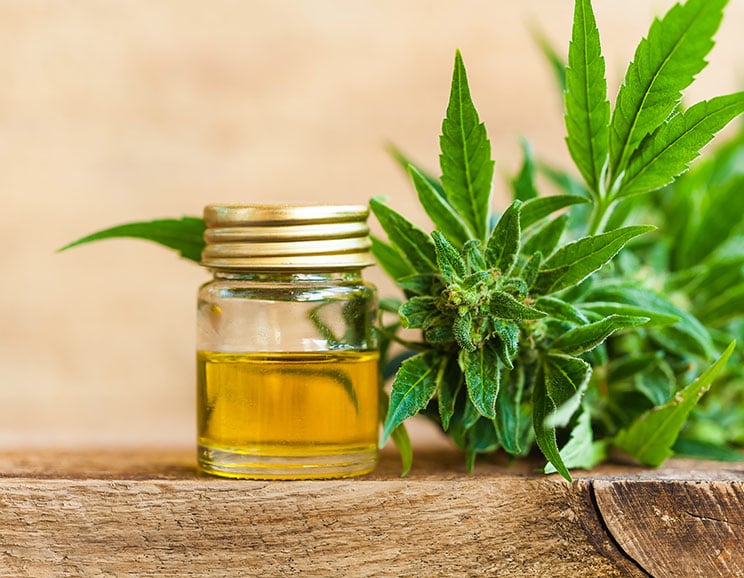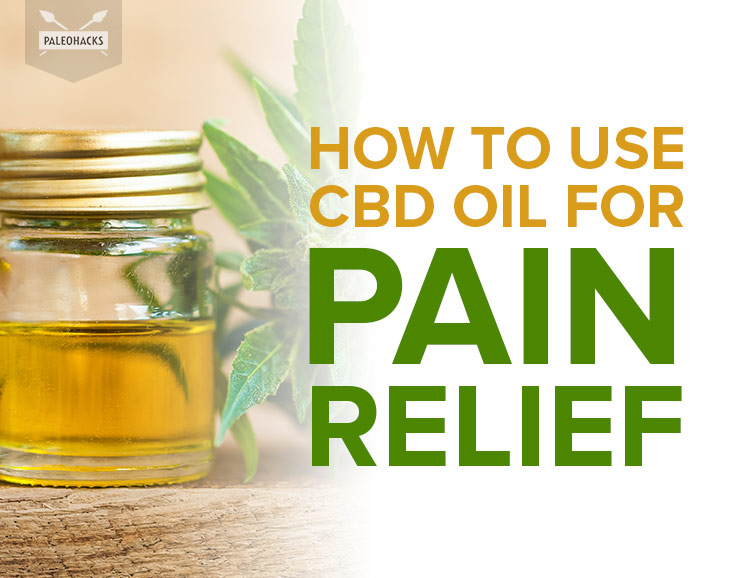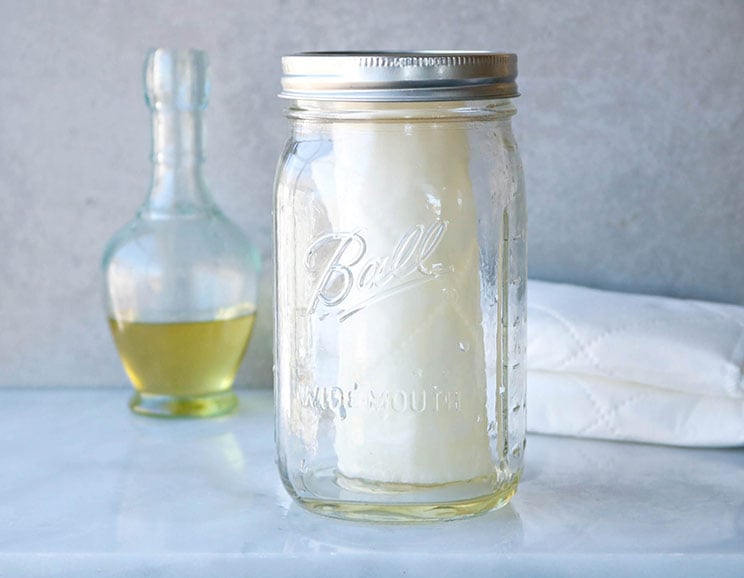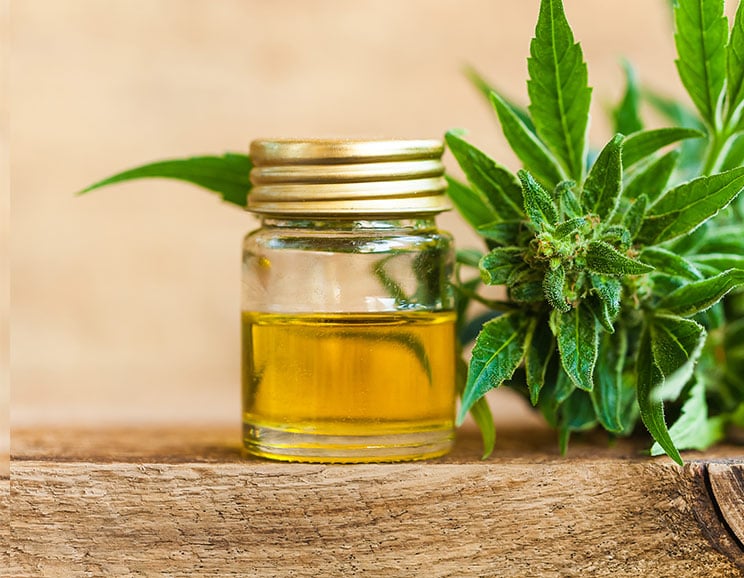If you’re sick of taking aspirin all the time, it might be time to try CBD oil for pain relief. Here’s how this potent anti-inflammatory and chronic pain reliever might be able to help.
If you haven’t noticed, CBD-infused products are exploding across the health sphere. From lotions and vapes to balms and edibles, there are virtually endless ways to consume this cannabis compound for its long list of benefits.
Most notably, research finds that you can take CBD oil for pain relief. Here’s what the science says about how it works, and your best options for giving it a try.
Want to train your brain to be happier and healthier?
Click here to receive our FREE 7-Day Meditation Challenge!
What is CBD?
CBD, or cannabidiol, is one of the many compounds found in the cannabis plant. Because this is the same plant that produces marijuana, one of the most common questions surrounding CBD is whether it will get you “high” in the same way marijuana does.
Fortunately, part of the attractiveness of CBD as a medicinal compound is the fact that it’s non-psychoactive, meaning it won’t get you high. The high felt by using marijuana results from another compound called THC, or tetrahydrocannabinol, and is not found in products made with isolated CBD.
The popularity of CBD in recent years is due to both the loosening of regulations around marijuana use, and also the numerous positive studies on its benefits. Research shows it may help improve symptoms of anxiety and depression, skin health, and even brain and heart health. (1)
While CBD is commonly known for improving anxiety, new studies reveal that CBD oil may be a potent fighter of chronic pain caused by inflammation.
Diseases Fueled by Inflammation

Inflammation is at the root of many kinds of pain and disorders. Scientists say that chronic inflammatory diseases are one of the most significant causes of death around the world – and those numbers are only expected to increase. As it stands, three out of every five people die from chronic inflammatory diseases like stroke, heart disorders, cancer, obesity, and diabetes. (2)
Other major diseases, like colitis, Crohn’s disease, arthritis, and multiple sclerosis, also wreak havoc on the body due to an inflammatory response. (3, 4) This common undercurrent of inflammation lead researchers to theorize that reducing it may improve or even stop the progression of diseases. (5)
So what is it about inflammation that can cause such damage to your body, to the point of fueling major diseases?
To put it simply: Inflammation in small amounts is beneficial since it aids in the healing process after an injury. In this case, an area of the body swells up for a bit, then reduces as the illness passes or wound heals.
However, when the trigger for inflammation is never removed from your body (for example, if you keep eating a food that causes inflammation in your gut) that inflammation can become chronic. Prolonged inflammation can result in tissue and cell damage, which leads to the symptoms of various diseases. (6)
How CBD Oil Calms Inflammation
CBD oil can help relieve pain by calming the underlying inflammation. One animal study on arthritis revealed that CBD can reduce the body’s production of inflammatory tumor necrosis factor, which spurs inflammation. (7)
Other studies show that CBD inhibits the enzyme COX-2, which is responsible for producing inflammatory compounds called prostaglandins. As an added potential benefit of this finding, researchers mention that inhibition of COX-2 may also play an important role in the development of colon cancer. (8)
CBD also shows promise in how it interacts with cannabinoid receptors in your brain. Studies show it can affect brain cells that reduce neuroinflammation, which plays a huge role in neuroinflammatory diseases like Alzheimer’s. (9)
How to Use CBD Oil for Pain

There are many ways to try CBD, so you may want to experiment with a few different options to see what works for you. If your pain is local, like in the case of a sore joint or muscle, you might want to try topicals. Vapes and oral methods are better for widespread inflammation, like arthritis.
Be sure to read CBD oil labels carefully before you buy, paying close attention to the ingredient list. Some CBD oils will contain THC (these are often referred to as “spectrum” oils) while others will be pure CBD isolates. Make sure your product contains no amount of THC if you want to avoid psychoactive effects.
You’ll also want to pay close attention to the source of your CBD. Look for hemp plants that grew in clean areas without contaminants. You should be able to find information about the hemp’s conditions and testing on the brand’s website or bottle.
Here are four ways you can take CBD oil for pain, and how they work.
1. Sublingual (under your tongue)
One of the most popular ways to consume CBD is as a tincture with a dropper. Place the drops right under your tongue, where the skin is thin and absorbs the CBD into your bloodstream in roughly 15-20 minutes. The effect of sublinguals will last on average 4-5 hours, making it a great option to carry with you throughout the day, or to take before bedtime.
2. Capsules
You can also take CBD in capsule form, either as an isolate or in supplements that contain other anti-inflammatory ingredients and herbs. This method is convenient but doesn’t take effect as rapidly as sublinguals or vapes. This is because the CBD has to move through the digestion process before being released into your bloodstream. However, once the capsules are broken down (in roughly an hour) the effects can last up to 6 hours.
3. Vapes
Vapes are similar to e-cigarettes. You can purchase a vape plus refillable pods that allow you to inhale CBD directly. Since the CBD goes directly to the small capillaries in your lungs, the effect is almost immediate. However, it only lasts 2-4 hours.
4. Topicals and Lotions
Topicals and lotions are great for localized inflammation and pain. The CBD is absorbed through your pores, so rub it directly on an inflamed or sore area. It will take about an hour to notice an effect, which lasts roughly 4-6 hours.
Dosing
There is no set recommended dose for CBD. In fact, even high amounts are generally safe. (10) We suggest that you start with a low dose and work your way up if you aren’t feeling an effect. Follow the dosing guidelines on your brand, and increase as needed until you reach your desired effect. If you aren’t getting any relief, you may want to try a different method of using CBD oil for pain.
Cautions
CBD has very few adverse side effects, even at high doses, and are generally very mild. However, some of the most common side effects include nausea, drowsiness, anxiety, dizziness, and dry mouth.
If you are taking any prescription medications, consult your doctor before taking CBD to make sure there are no possible interactions. The same applies if you’re pregnant.
The Bottom Line
Research shows that CBD can soothe inflammation in the body, though more research is needed to explore how CBD oil for pain really works. We think it may be worth a try if you’re experiencing pain caused by inflammation. Plus, the side effects are minimal!
For even more inflammation-fighting goodness, try supplementing with turmeric! Get THREE free bottles when you purchase just one Science Natural Max Absorption Turmeric bottle here.



 Garlic Shrimp Tossed in a Buttery Hawaiian Sauce
Garlic Shrimp Tossed in a Buttery Hawaiian Sauce









Show Comments